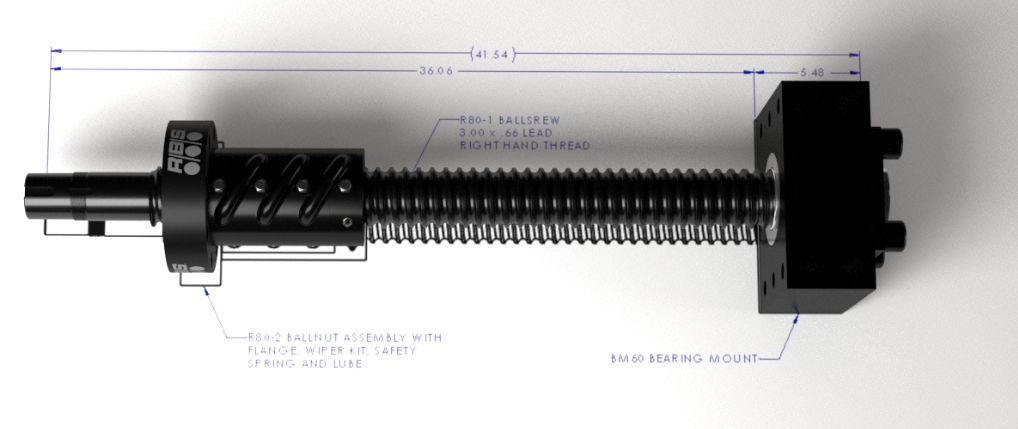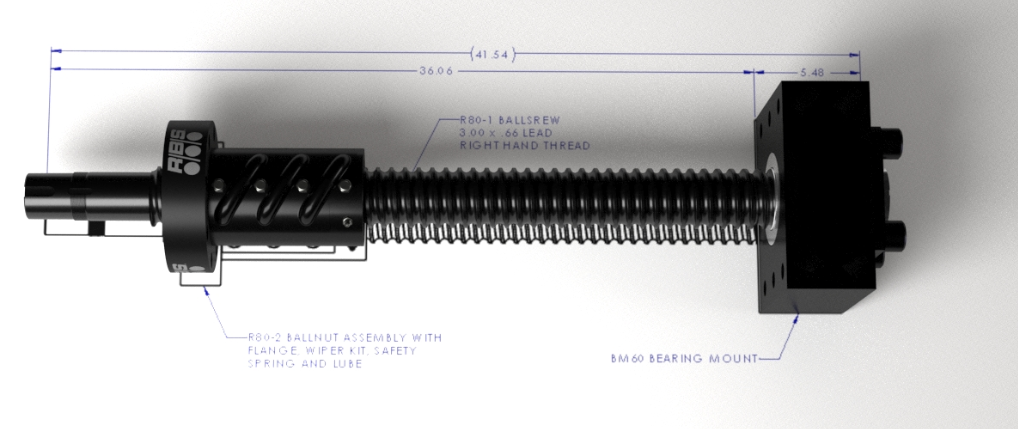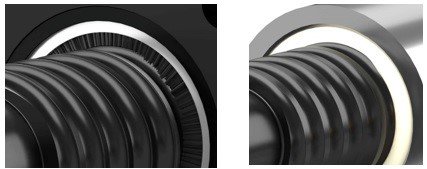Avoid ball screw failure through proper application design and preventive maintenance

Article appears in Engineering 360:
https://insights.globalspec.com/article/15198/avoid-ball-screw-failure-through-proper-application-design-and-preventive-maintenanceBall screws are used in a wide array of linear motion applications across multiple industries. They are one of the most economical ways of converting rotary motion into precision linear motion and can move heavy loads at fast speeds with outstanding accuracy. While these devices provide numerous hours of smooth, trouble-free operation, they must be properly specified, installed and regularly maintained to avoid system downtime and premature failure.
This article reviews the various ball screw failure modes and describes how Rockford Ball Screw (RBS) can assist with ball screw system design, maintenance, repair and replacement.
Ball screw overview
Ball screw assemblies consist of a screw that is driven by a rotary motor, a ball nut with recirculating ball bearings that translates along the screw to convert rotary motion into linear motion via attachment to a carriage, and is supported by thrust or angular contact bearings on one or both ends of the ball screw to support axial and radial loads (Figure 1).

Figure 1. Ball screw components.
In a typical operating ball screw system, the motor turns the screw, which enables the nut to linearly translate along the length of the screw. Recirculating ball bearings maintain intimate contact between the ball nut and the screw to ensure highly efficient movement, allowing precise positioning of the translating ball nut. Inertial forces encountered by acceleration/deacceleration of the carriage are reacted through the support bearings on one or both ends of the screw.
Ball screw component failures can manifest in various ways. Excessive wear to the ball nut, screw, ball bearings or support bearings can affect the ability of the system to precisely control the position of the load being moved and can create excessive backlash, vibration or ball bearing noise. Internal frictions will increase causing the required torque to turn the screw to increase to the point where system failure occurs and the ball screw is no longer operational. This can cause significant system downtime to repair or replace worn or damaged components.
Regular preventive maintenance (PM) of the ball screw system can ensure reliable, trouble-free operation. The screw must be wiped off to remove debris and old lubricant residue and then replenished with new lubricant. The frequency for ball screw maintenance is determined by the duty cycle and environment in which the ball screw operates. Increased inspections after installation and startup are recommended to monitor cleanliness, alignment and operation to ensure the ball screw remains properly lubricated and to develop the right preventive maintenance schedule for the system.
Ball screw failure mechanisms
Potential ball screw failure mechanisms include the following:
Insufficient lubrication — Ball screws are selected to provide a smooth, highly efficient transmission of rotary motion to linear power and requires proper lubrication to maximize efficiency, life and system uptime. The ball screw assembly design relies on lubrication to minimize rolling resistance between the ball bearings and ball threads along with a reduction of the sliding friction between adjacent balls. When ball screws are not properly lubricated, a grinding, metal-to-metal contact wear ensues. Operating temperature, duty cycle, environment, axial load and RPM/speed determine the lube application rate needed for each system. Dry film lubrication is recommended in applications when grease or oil is not an option, however, ball screws and ball nuts need to be coated with phosphate for the lubricant to work properly. Graphite-based lubricants should be avoided due to their abrasive qualities and their potential to clog ball return circuits. General lube type suggestions include:
- Light loads and high speeds: Machine oil or low viscosity grease
- Medium loads and medium speeds: NLGI 1 or 2 grease
- High loads: Grease with an EP2 additive. The EP stands for extreme pressure and it prevents the grease from breaking down.
Excessive heat — For applications with elevated temperature operating conditions, it is recommended that a high temperature-rated lubricant be used that resists oxidation and evaporation. If a lubricant is not rated for high temperatures it can oxidate, evaporate or run off, leaving the ball bearing contact surfaces dry.

Figure 2. RBS ball nut brush wiper (left) and ball nut end seal (right).
Dirt or contamination — The accumulation of dirt or debris can lead to clogging of the ball return circuits or wear of the contact surface. Chemical exposure can also contaminate a ball screw by stripping away the lubricants and attacking the contact surfaces, resulting in oxidation or corrosion. When the operating environment is dusty or creates chips, the use of wipers or end seals are recommended to prevent debris getting into the ball nut (Figure 2). Bellows, way covers or other types of shields may also be required to prevent accumulation of debris on the ball screw and help keep debris away from the ball nut. Regular cleaning of the ball screw and replacement of lubrication is critical for avoiding this type of failure.
Incorrect alignment — The ball screw must be installed in a manner to ensure proper alignment with the guiding system to avoid generating bending moments and binding during travel. Ball screws are designed for axial loading only, so non-axial loads will create bending moments or radial loads on the ball nut, reducing life and eventually seizing up ball nut motion. The use of precise measurement equipment, such as dial indicators and monitoring motor amp draw, can confirm alignment of the nut over the entire length of the screw.
Insufficient ball recirculation — Short back and forth stroking or dithering movements of a ball screw will concentrate loading on one area of the ball screw and the same ball bearing surfaces, causing premature wear of surfaces, brinelling and limits lubrication from being circulated in the ball nut. Eventually the ball bearings will deteriorate, causing increased friction and torque, and will not be able to properly roll, ultimately seizing up ball nut motion. Periodic longer-travel strokes are therefore recommended that will allow the ball bearings and lubrication to fully recirculate.
Ball screw not sized properly for the application — Overloading a ball screw will reduce life, so it must be sized or rated properly for a given application. Several factors affect sizing, including the maximum load being moved, its travel rate or speed, the critical ball speed, column load, duty cycle, end fixity and drive torque. Other factors can include the operating environment, system mounting, stroke length and load guidance.
Excessive speed — The critical ball speed (DN Value) defines the maximum speed at which the balls may move through the ball nut without causing failure of the return components. Furthermore, running the ball screw at or above the critical shaft speed will generate resonant vibrations that can cause excessive system vibrations, control issues, positioning accuracy loss and premature failure of the end support bearings or drive system. Operating the ball screw assembly at or below the calculated maximum linear velocity and critical ball speed will avoid these types of failures.
